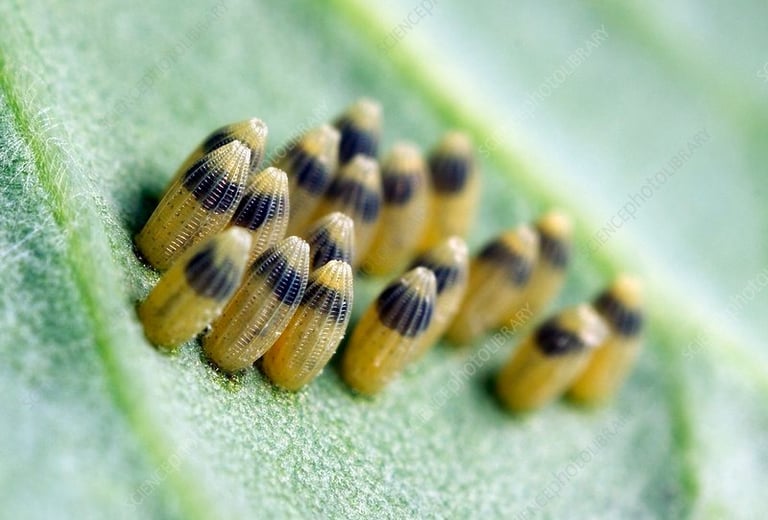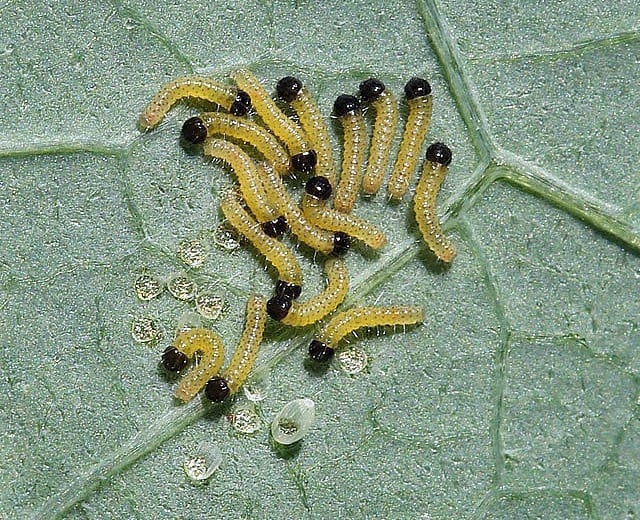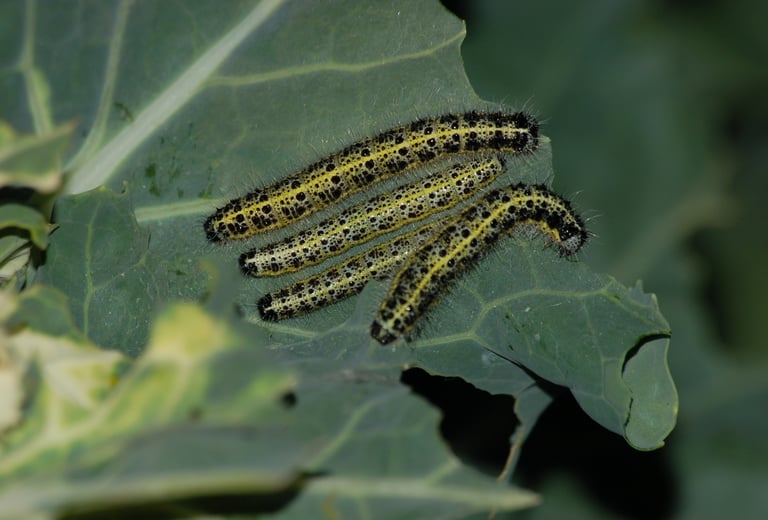The cabbage white butterfly, Pieris brassicae (Linnaeus) (Lepidoptera: Pieridae)
The cabbage white butterfly, Pieris brassicae (Linnaeus) (Lepidoptera: Pieridae), is a serious pest of cauliflower and cabbage in India (Shankar et al., 2016) as well as world (Hasan, 2008). A single larva can consume about 74 to 80 cm2 leaf area (Younas et al., 2004). In cruciferous vegetables, this pest alone causes 40 per cent yield loss annually in India (Hasan and Ansari, 2010). As a result of feeding, the plants either fail to form compact cabbage heads or produce deformed heads (Uddin et al., 2007).
The large white is common throughout Europe, north Africa, and Asia to the Himalayas often in agricultural areas, meadows and parkland. It has managed to establish a population in South Africa and in 1995 it was predicted to spread to Australia and New Zealand., though their exact place of origin is yet unknown. These are small- to medium-sized butterflies found flying in numbers especially during the late spring and the summer months. Though smaller by size, the species is often confused with the large white because of the similarity in appearance.
Subspecies include the following:
Pieris brassicae azorensis (Rebel, 1917)
Pieris brassicae brassicae (Linnaeus, 1758)
Pieris brassicae catoleuca (Röber, 1896)
Pieris brassicae cyniphia (Turati, 1924)
Pieris brassicae cypria (Verity, 1908)
Pieris brassicae italorum (Stauder, 1921)
Pieris brassicae nepalensis (Gray, 1846)
Pieris brassicae ottonis (Röber, 1907)
Pieris brassicae subtaeniata (Turati, 1929)
Pieris brassicae vazquezi (Oberthür, 1914)
Pieris brassicae verna (Zeller, 1924)
Pieris brassicae wollastoni (Butler, 1886)
Small white, Cabbage white or Cabbage butterfly (Pieris rapae)
P. brassicae insect pest feeds on all Cole crops (cabbage family plants), but it prefers broccoli, cabbage and cauliflower. The attacks to crops are rather localized and can lead to 100% crop loss in a certain area. In addition, because of its strong inclination to migrate, adults may infest new areas that were previously free from attack. Because many of the host plants of P. brassicae are sold for consumption, damage by these butterflies can cause a great reduction of crop value. Larvae may also bore into the vegetable heads of cabbage and cauliflower and cause damage. Damage to cauliflower and broccoli is caused by the excrement which discolours the heads. High populations of these larvae may also skeletonise their host plants. In present-day areas such as Great Britain, P. brassicae are now less threatening as pests because of natural and chemical control reasons. However, it is still considered a pest in other European countries, in China, India, Nepal, and Russia. In fact, it is estimated to cause over 40% yield loss annually on different crop vegetables in India and Turkey.
This pest overwinters in the pupal stage on host plants. Adults emerge in mid-Spring and lay eggs singly on the undersides of outer leaves. Eggs hatch in 4 to 8 days and larvae mature in two to three weeks, then pupate on the host plant. The development from egg to adult requires 3 to 6 weeks. Adults emerge in one to two weeks, mate, and lay eggs for another generation. There are 3 to 5 generations each year.
Resistance to Synthetic Insecticide
Usually, farmers are dependent on synthetic insecticides to suppress P. brassicae infestations in cabbage crops (Ullah et al., 2016b). The frequent use of synthetic chemicals has resulted in resistance to these insecticides. Consequently, it is now difficult to control this pest using existing synthetic insecticides (Thomas, 1999). The injudicious use of insecticides has led to many biological and environmental problems, such as toxicity to non-targeted plants, insects and other organisms, environmental degradation, and human health hazards (Badshah et al., 2015; Zahid et al., 2016). Given the destructive nature of synthetic chemical insecticides, it is critical to develop safe and environment friendly resources for better and safer pest management (Rangad et al., 2014).
IPM Control Program
Looking at insecticide resistance status and the failure of multiple synthetic insecticide molecules to control the population of Large cabbage white, a sustainable containment strategy based on integrated pest management is recommended.
During our open field trials in cabbage crop; our IPM tool bioelectronics pest control device eBionic® FlyStar + ATT20-PIE-SPP achived excellent control on P. brassicae. Deployment of this device in fields reduced the population of P. brassicae well below economic threshold level (ETL) and kept yield losses well below 4%.



















